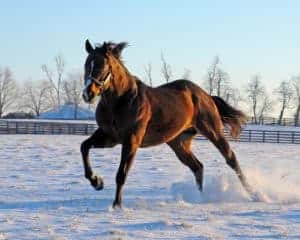Fact Sheet: Supporting Equine Joint Health
- Posted by Stacey Oke, DVM, MSc
Share:

What does your multimodal treatment plan for OA look like?
While once considered a disease of articular cartilage, we now know osteoarthritis (OA) is a “whole joint” disease. It affects the articular cartilage lining the edges of bones within the synovial fluid-filled joint, the subchondral bone lying directly under the cartilage, the joint capsule/membrane (wall/lining), and the supporting soft tissues (e.g., muscle, connective tissues, tendons, ligaments, menisci).¹ Musculoskeletal trauma from natural, repetitive concussion of the lower limbs or sport-related injuries commonly contribute to OA development.
Current estimates indicate one in five horses has this painful, degenerative, and progressive condition.1-3 Therefore, OA is one of the most common joint disorders of horses and a leading cause of disability.4 While any horse is at risk of developing OA, aging, nutrition, obesity, joint injury, and genetics are specific risk factors that increase the chances of disease.¹

Written by:
Stacey Oke, DVM, MSc
Related Articles
Stay on top of the most recent Horse Health news with














